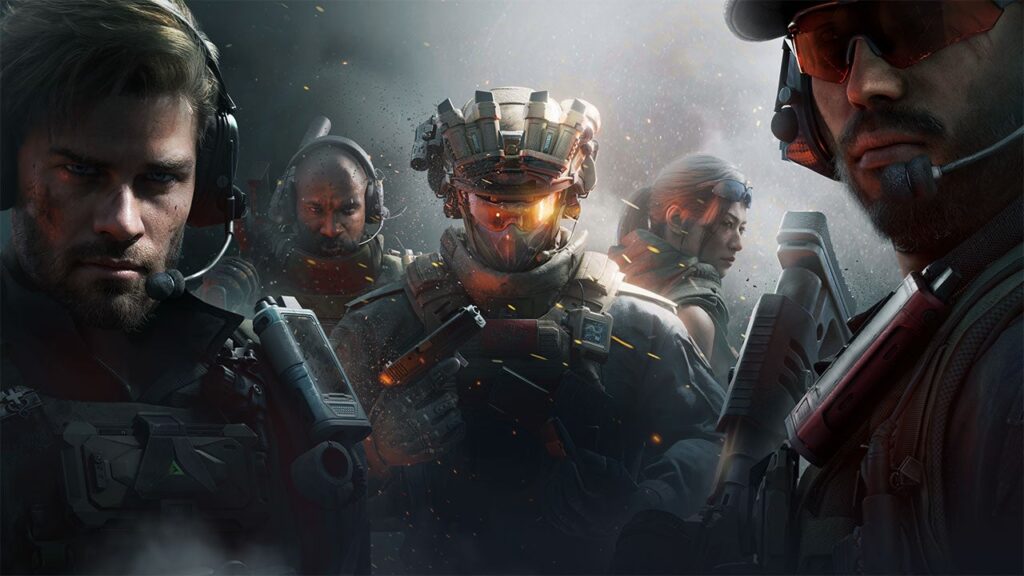“First-person shooter” is a broad term. It can mean everything from an action-horror game like F.E.A.R., to a sci-fi adventure like Metroid Prime, to a demon-eviscerating romp like Doom. Even narrowing it down to a sub-category like “military FPS” still puts the linear campaign of Call of Duty, the enormous PvP clashes of Battlefield, and the white-knuckle extractions of Escape from Tarkov (among others) under a single umbrella. Delta Force, the latest revival of a now 26-year-old shooter series last seen in 2009, is probably best defined as a bit of each of those last two – with a dedicated large-scale PvP mode and a separate extraction shooter mode, it sits somewhat awkwardly at the center of that Venn diagram. As a result, it’s a free-to-play one-stop shop of “just fine”: It’s competent all around, but doesn’t distinguish itself in battle with any substantial new ideas.
While Delta is officially “out,” (whatever that means anymore) only two of the three main modes are currently available. The third, a single-player campaign, is planned as paid DLC somewhere down the line. Of the two that are here now, the Warfare mode is Delta Force’s version of the big team combat of Battlefield, where 64 players duke it out for supremacy across one of a handful of sprawling arenas. There is no straight kill-focused Deathmatch; instead, the focus is on objective-based games like King of the Hill variants. The standout among these is Attack and Defend, which has one team capturing strategic points before running out of a finite number of respawns, while the other team defends those areas with limitless lives. It’s a subtle rule change that does put a good spin on a mode we’ve seen a ton of in Battlefield; initially, the offense has the advantage thanks to favorable terrain and an abundance of vehicles, but things even out as the match progresses and the defense retreats toward their home base and has quick access to respawned reinforcements. This means each side typically gets to spend some time as both the figurative hammer and the nail.
The battles certainly do feel big, which is a good thing. Fast respawns mean both teams are dense with soldiers at all times. Once the bullets and rockets start flying, the chaos and confusion of combat is as exciting as you’d expect for a Battlefield-style game. Each gun you use earns it’s own XP to unlock component options, as is common on modern military shooters. It’s particularly fun when you get behind the controls of a vehicle and start running roughshod over the other team. A tank fully loaded with gunners can dominate, but don’t sleep on the impact of a simple machine gun turret on the top of an armored car. And similar to Battlefield (yes, you’re hearing that comparison a lot, for good reason), aerial vehicles like helicopters are challenging to pilot but can be powerful in the right hands, rewarding skillful play.
Vehicles don’t totally dominate the battlefield, however, thanks to the varied operatives you can choose to play as and switch between mid-match. These named characters act as a sort of hybrid between a simple loadout choice and a bespoke hero, which is somewhat similar to the Specialists from Battlefield 2042, which fits the jack-of-all-trades theme persistent throughout Delta Force. They create the sort of rocket-paper-scissors balance that Battlefield veterans will know intimately, and it’s done pretty well: if you are being overrun by vehicles, it might be a good idea to spawn with a rocket launcher or, if the fight is taking place in open spaces, it could be time to bust out the trusty sniper rifle. Each character has unique abilities that are helpful in battle too, like Luna’s Detection Arrows that can periodically be fired to reveal enemies, but none are so powerful as to outright win a skirmish, let alone a whole match for you.
I just wish the action felt better on a basic level. One thing that strikes me as off is the way that bullet arc and trajectory factor heavily into shooting, so leading your targets is essential for firing accurately at a distance. I don’t mind leading a target, but often the bullets feel like they are flying so slow that I may as well be firing airsoft rounds. Maybe that’s more realistic than Call of Duty’s more arcadey ballistics model, but feels deeply at odds with the aggressive pace of play that the objective-based Attack and Defend mode drives. Once you die you generally need to rush back to the objective, but as you’re dashing through open space you’re an easy target, and the finicky shooting also means it’s tough to return fire accurately on the move. I found this meant deaths tend to come in bunches while I tried to get back to a good position. It’s also a bit strange to have the gunplay be so grounded in simulation at one moment, then have operators activate fantastical abilities like clouds of healing smoke or status effect-inflicting drones the next. There’s nothing inherently bad about that, it’s just a head-scratcher.
Get in, get loot, get out
On the other side of things, the Operations mode follows the equally familiar extraction shooter framework: You and up to two friends can form a three-person squad to enter an area, shoot AI bad guys, grab the loot, and scoot back to the extraction zone without catching a bullet. It’s a tried-and-true formula that Delta Force follows to the letter, but the generally high quality of its execution makes up for at least some of that lack of imagination.
There are three levels available at launch (with another unlocking in just a few days) and each is an open sandbox that is dense with objectives to choose from. Maps easily highlight points of interest for things like bounty targets, safes to plunder, and intel to decode. That might seem like a small detail to praise, but in a genre dominated by games like Escape from Tarkov that are designed to be intentionally opaque, Delta Force’s choice to make important information accessible is a nice differentiator. I like being able to just drop a waypoint and know what I’m in for when I get there without having to memorize the maps or look them up in a guide.
Once you pick your destination, you’ll need to shoot your way through squads of AI soldiers, and occasionally other human squads who cross your path. So while we have more information here than in similar games, the suspense is still in effect because you never know who’s around, or in what numbers, and that means every enemy encounter starts with some fast risk assessment: do you take the shot and risk letting everyone know where you are, or do you sneak by, leaving a potential threat on the field? Making quick decisions with limited information does a good job of keeping the action strategic and interesting. That’s particularly true if you see other people, as they are certainly more dangerous than the bots, but could be loot-rich targets worth taking on.
I’m a fan of the enemy variety Delta Force throws at you. I encountered plenty of run-of-the-mill soldiers that had my squad fighting roving bands of riflemen, ducking into buildings to avoid sniper fire, and executing on-the-fly flanking maneuvers to get around riot shields. But then there are surprises that shake things up: One memorable moment saw my team pinned down by a massive armored baddie blasting at us with a minigun as we lobbed grenades from behind cover. Another time, a member of our trio was cracking a safe while the other squadmate and I provided cover, and I almost jumped out of my chair when a giant alligator came around the corner and tried to put a stop to our fun.
One place where you get perhaps too much information, though, is the loot system. There are all sorts of containers everywhere, like file cabinets, coat pockets, fallen enemies, etc. – but just about any Operation starts with the whole squad just running right towards whichever safe on the map is marked with the best loot. That could use some work, because the levels themselves are really cool when you explore them freely. Areas like The Dam mix offices with exposed industrial exteriors, and there are often hidden doors to open or secret hidden areas where loot can be stashed. Some areas require specific operators to access, like chain link fence that needs to be cut into by the Engineer, which would give you even more reasons to think about your team composition if there were a reasonable chance that there’s something worth finding on the other side. I would be much more inclined to explore if I thought valuable treasures were potentially waiting in all these hidey-holes.
The time between Operations is spent at the Black Site, which functions as your home base and the tiny amount of storage space in your stash that needs upgrading. It’s also where you manage the well-built loadouts screen where you can save a few different kits you can take into battle, or rebuild them with just a few clicks. It’s a fast and slick way to get back in the action, which helps take the sting out of a failed extraction.
I’m also a fan of the ticket system, which you can trade in for entire load-outs, including weapons, armor, ammo, and healing items. There are different quality levels you can cash in, Recruit gives basic equipment, Standard includes better armor and weapons with more powerful mods, etc. Every failed extraction gives you a Recruit Ticket, and you automatically generate one every eight hours, so even if you have a run of terrible luck and lose all your in-game money, you can still start working your way back up from the bottom with some decent gear. The more powerful tickets, meanwhile, are tied to completing events. These can be as simple as logging in at certain times, or as complex as completing a long series of assigned tasks in a particular level or as a specific character.
Upgrading other parts of the Black Site takes a mix of increasing levels and salvaging specific components in the field. I appreciate that you can see what things you need to collect, and even launch straight to the correct level to find them, though the amount of time it takes to get even the early upgrades going can take way too long when you need to have good RNG luck with what you find on top of grinding up to the right level. I’d love to build up a workbench to make my own ammo, but given the commitment I’m just going to stick to selling weird vases and buying what I need, thanks.

